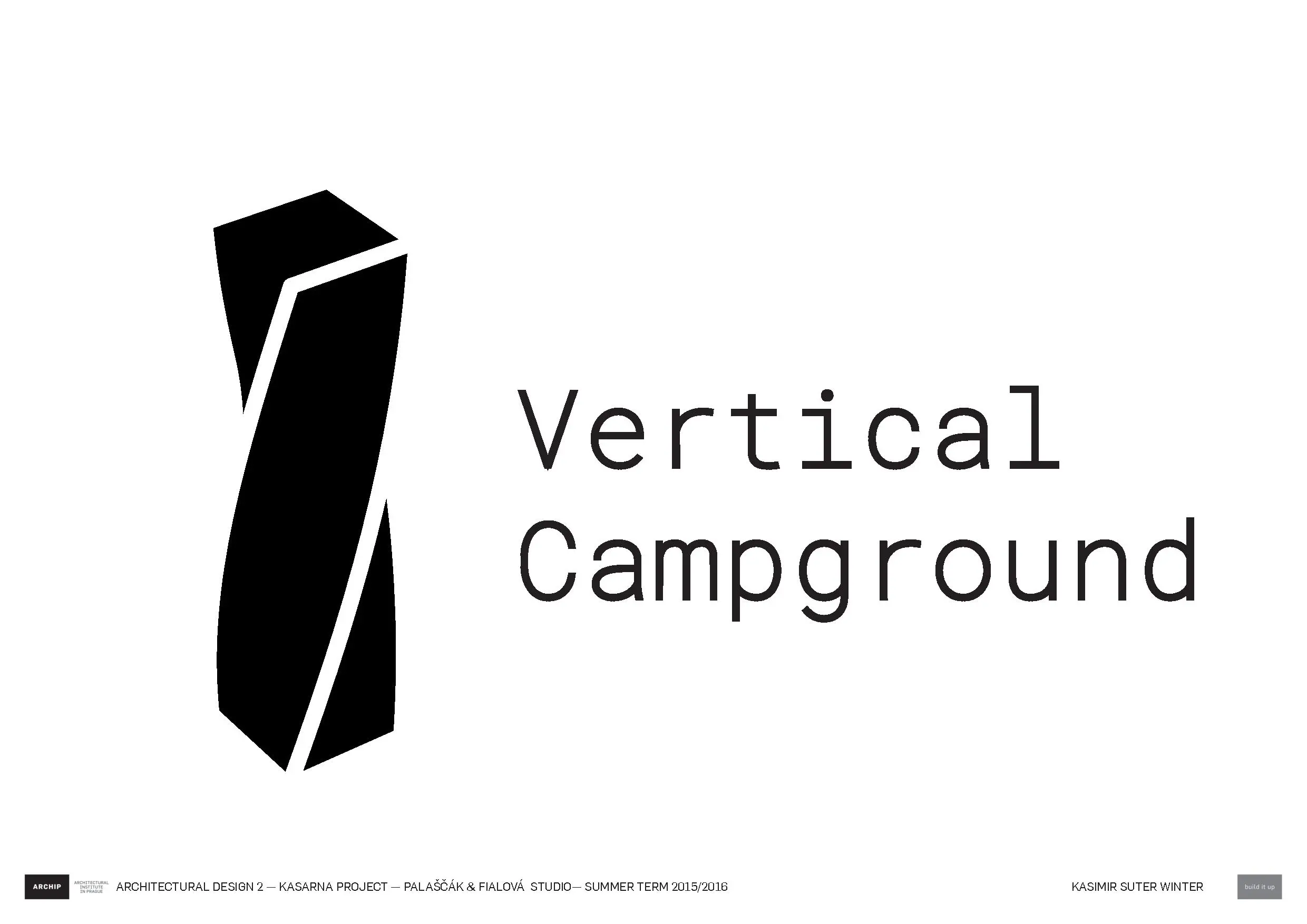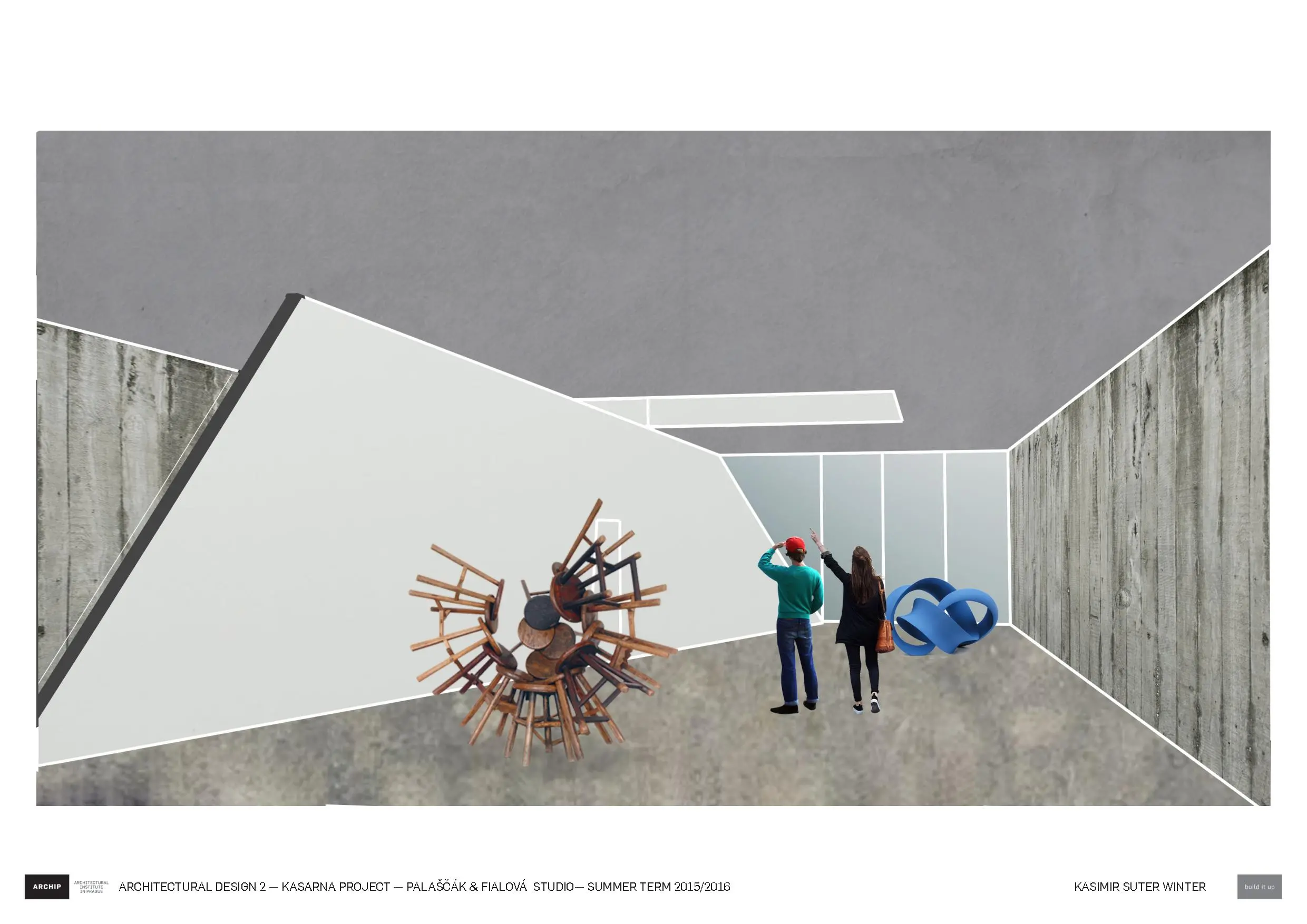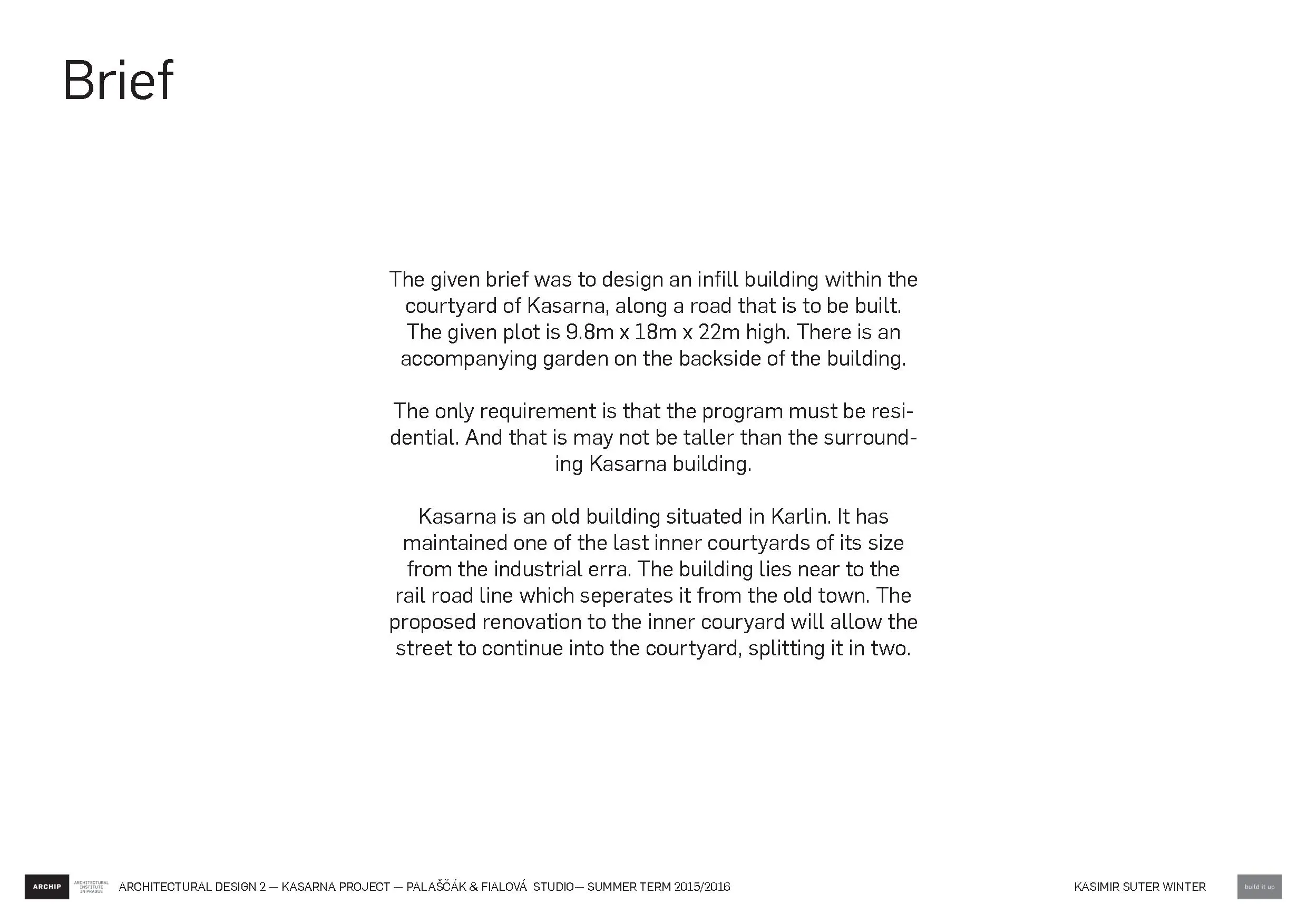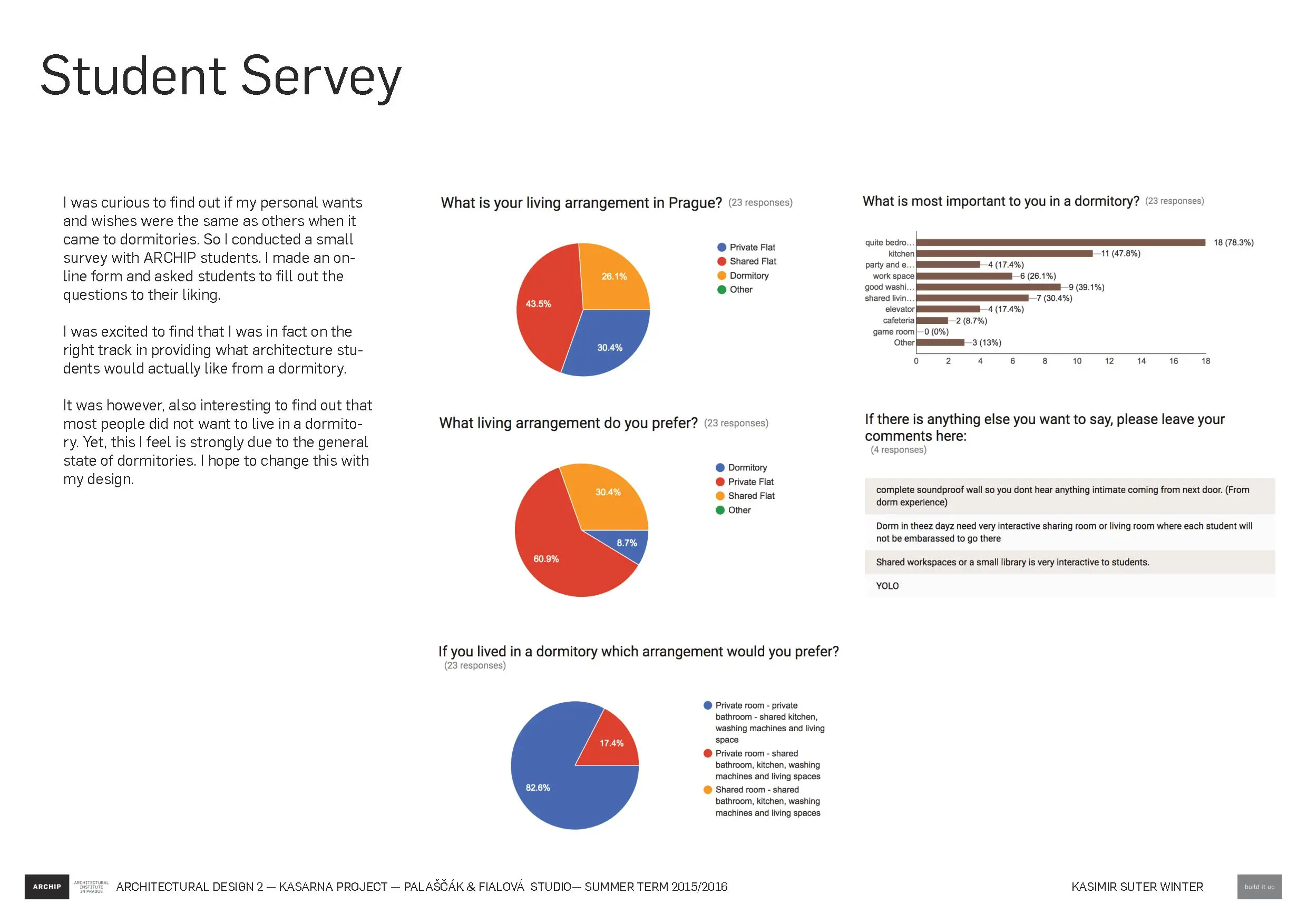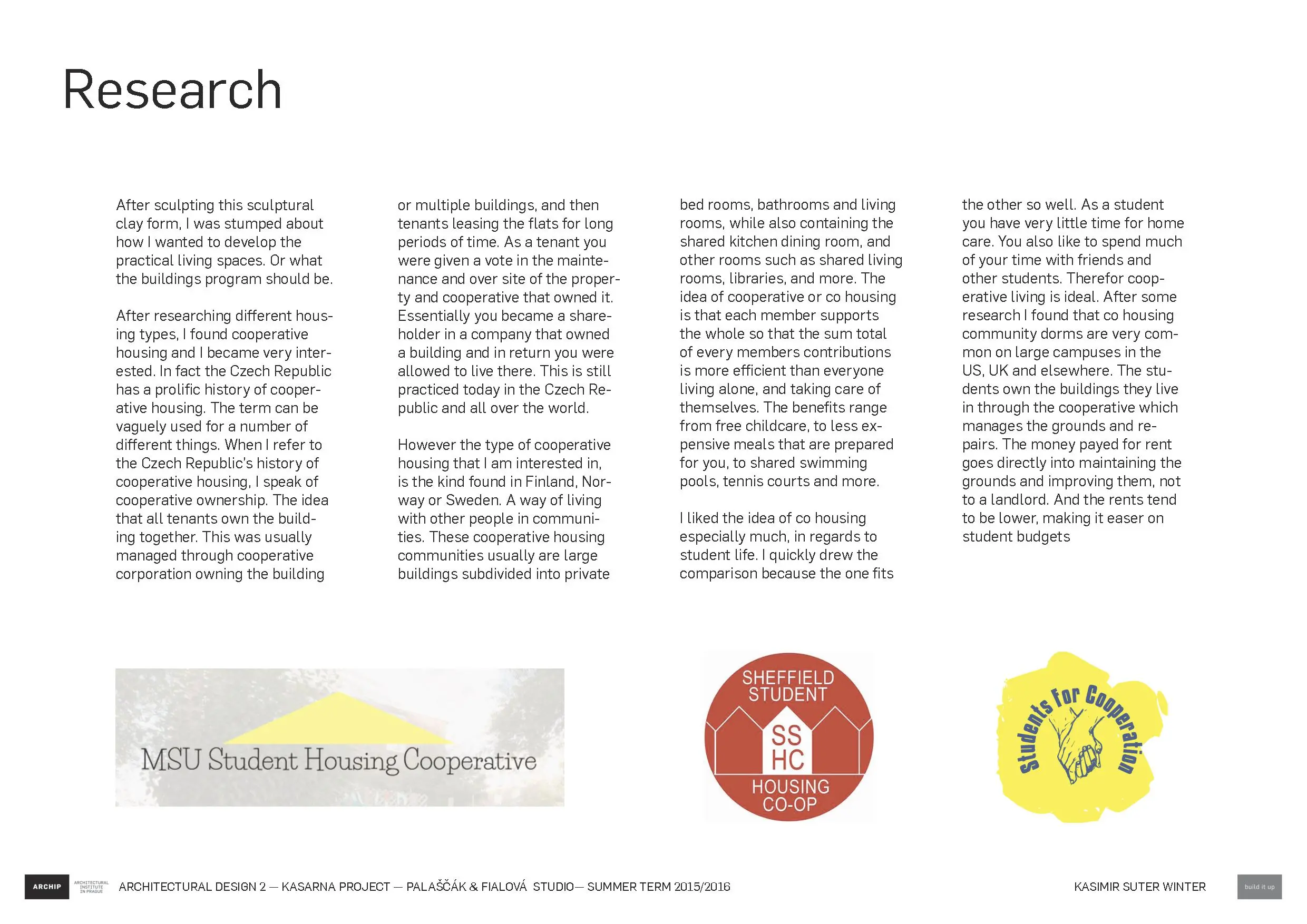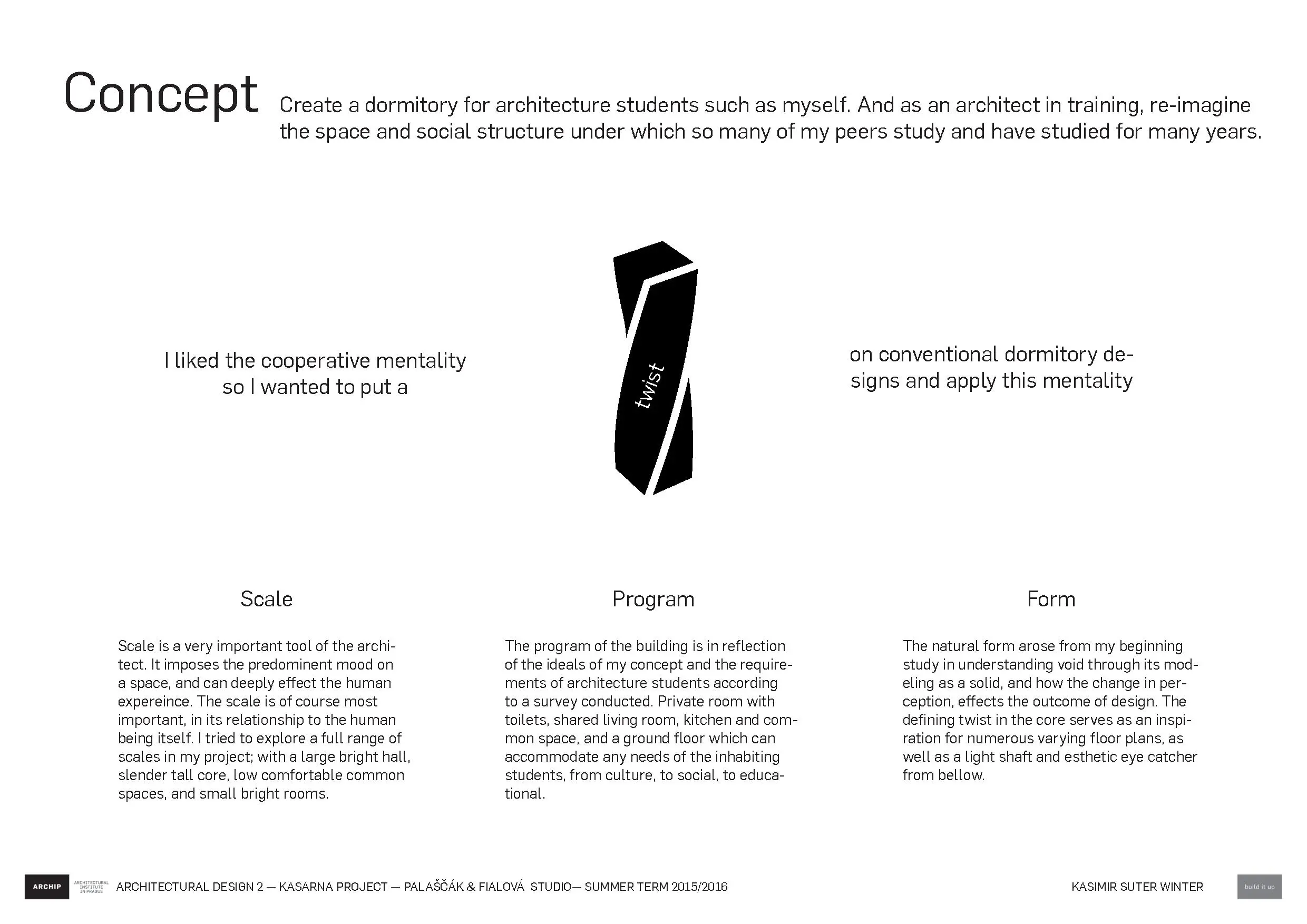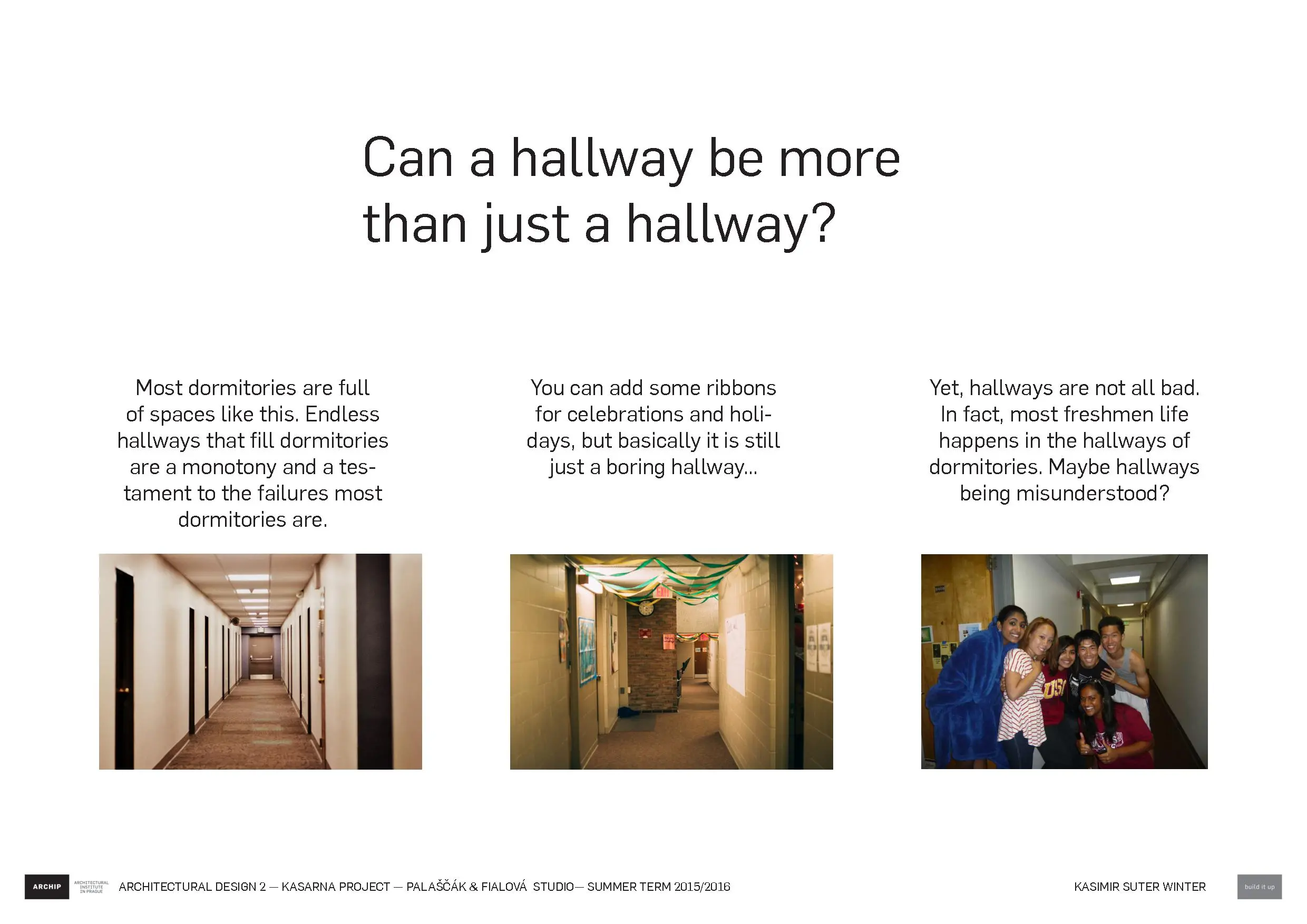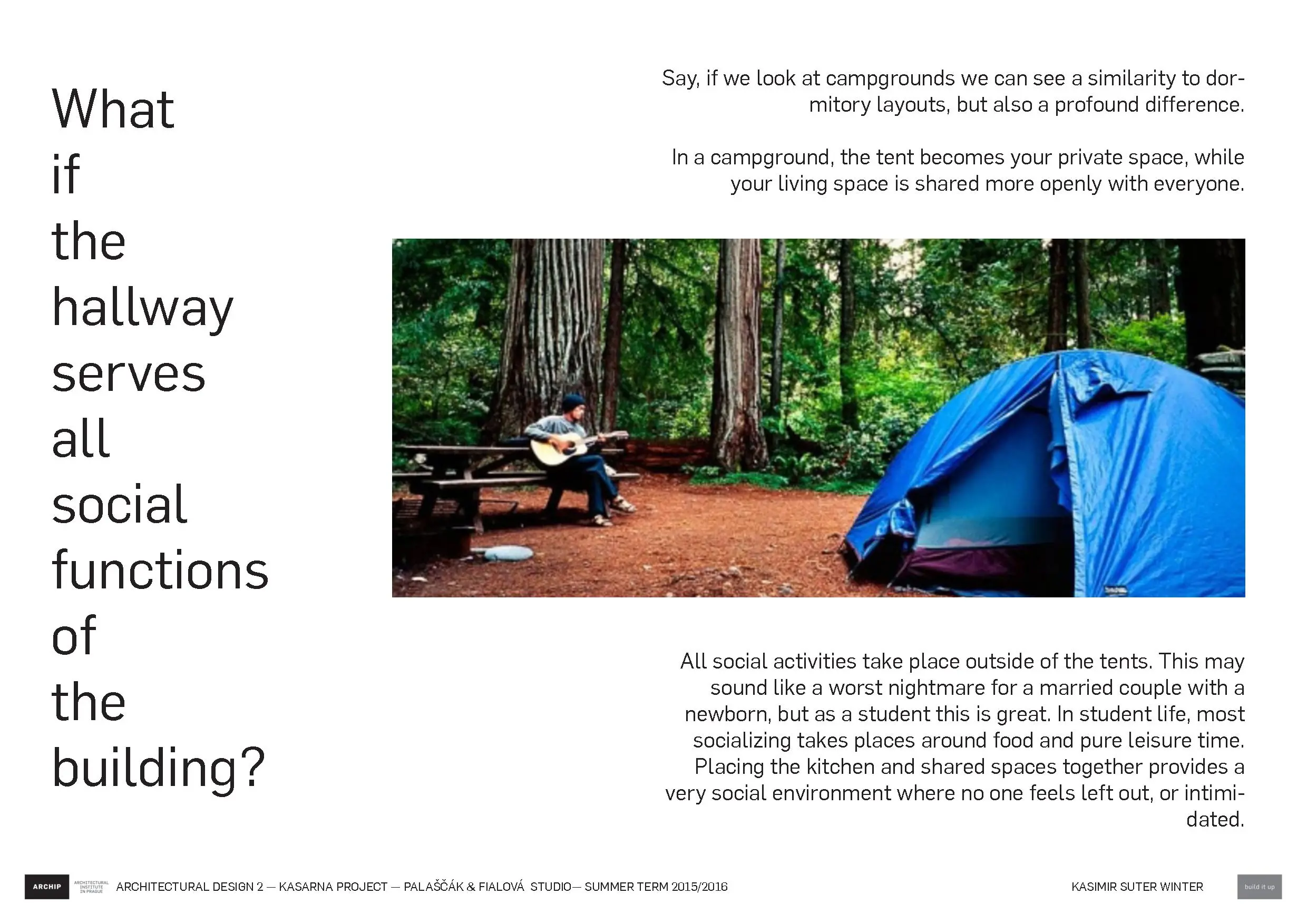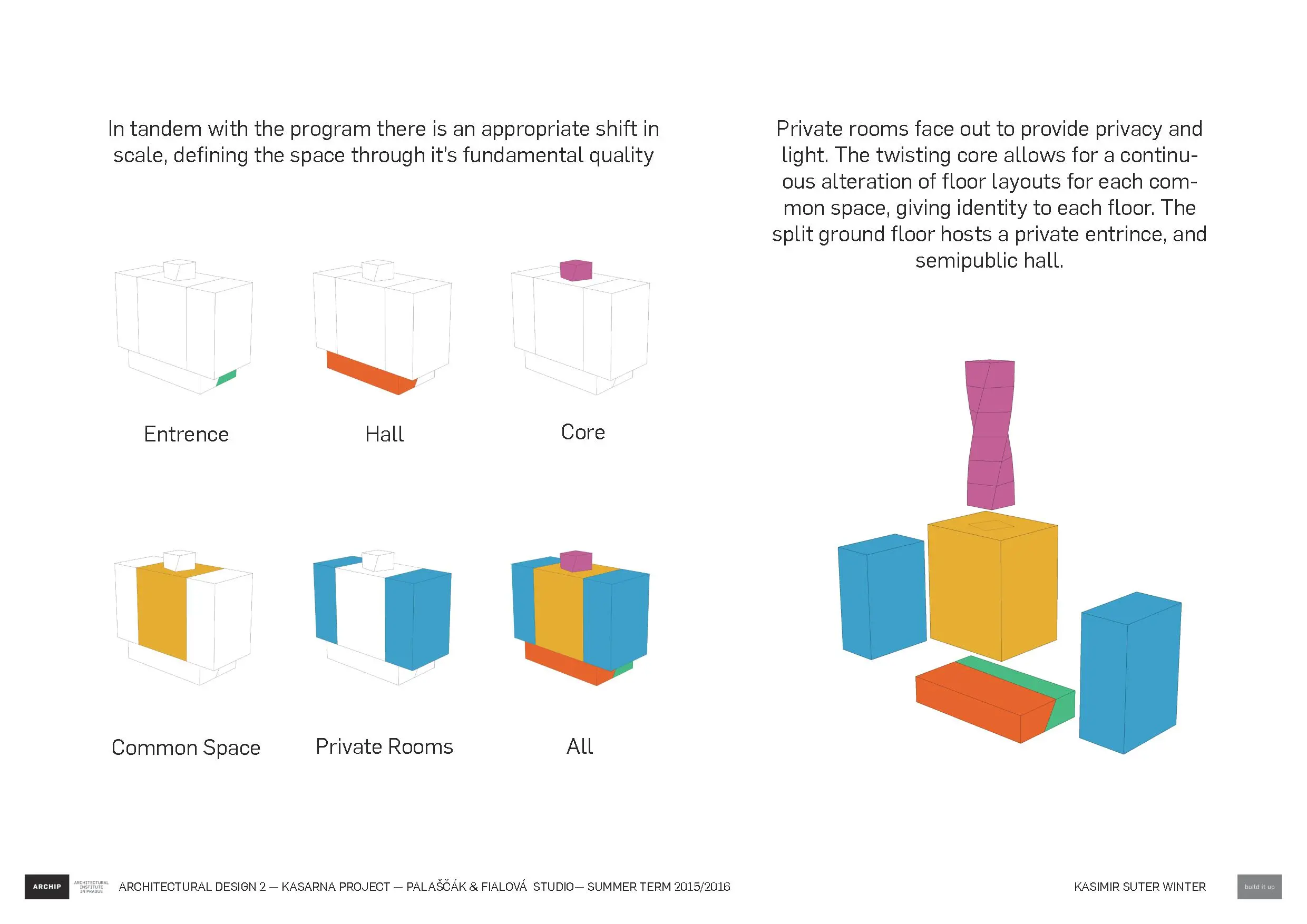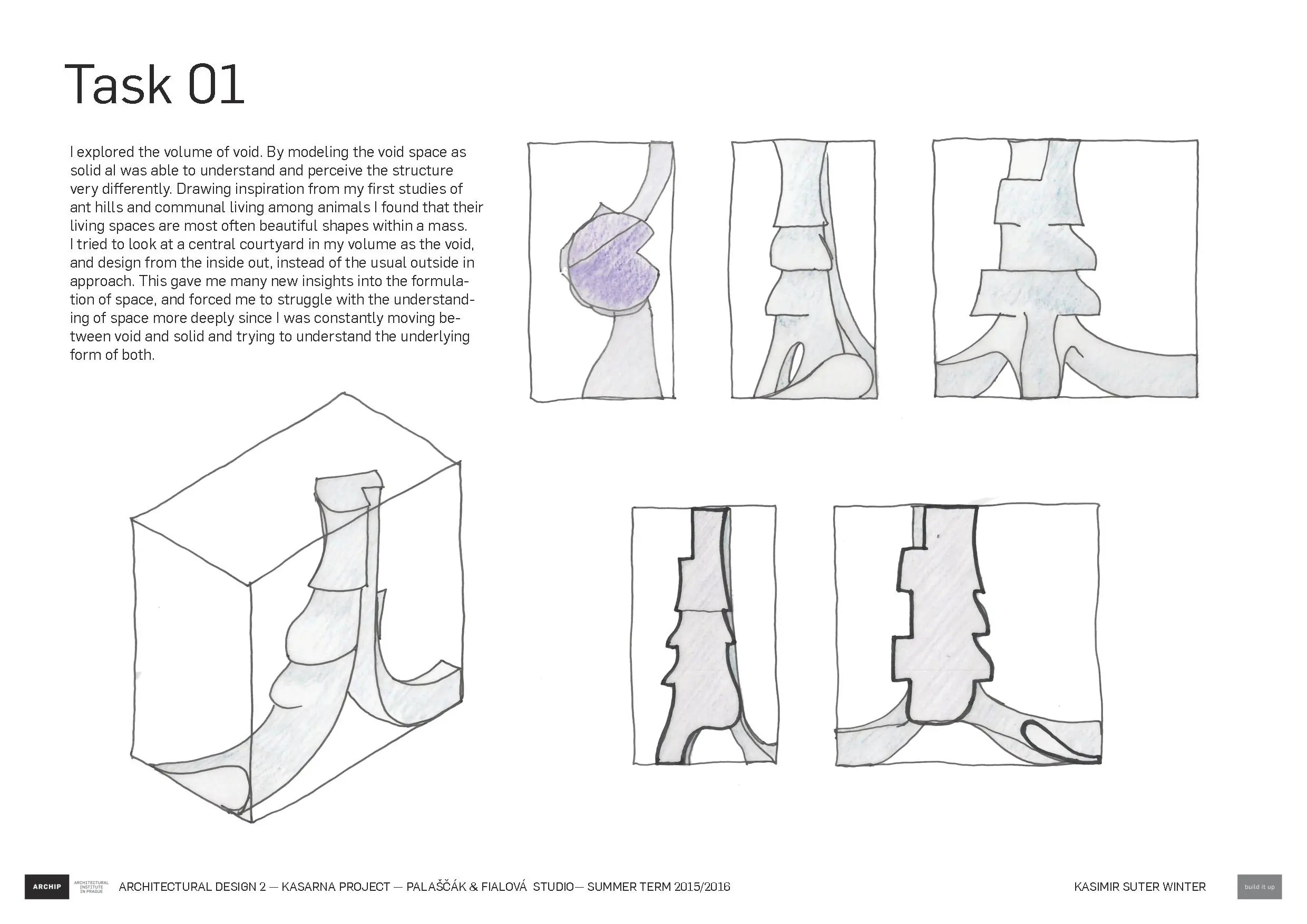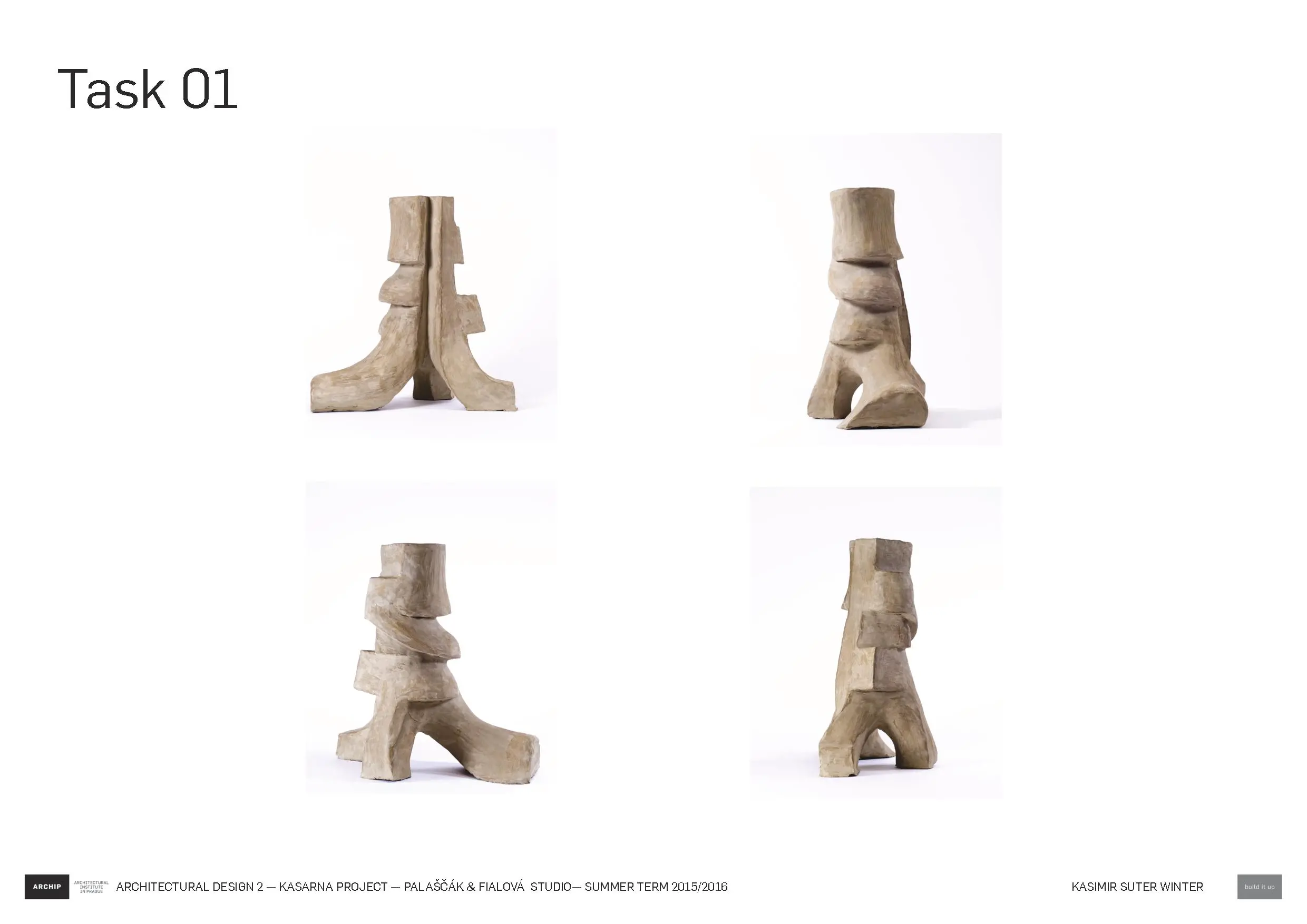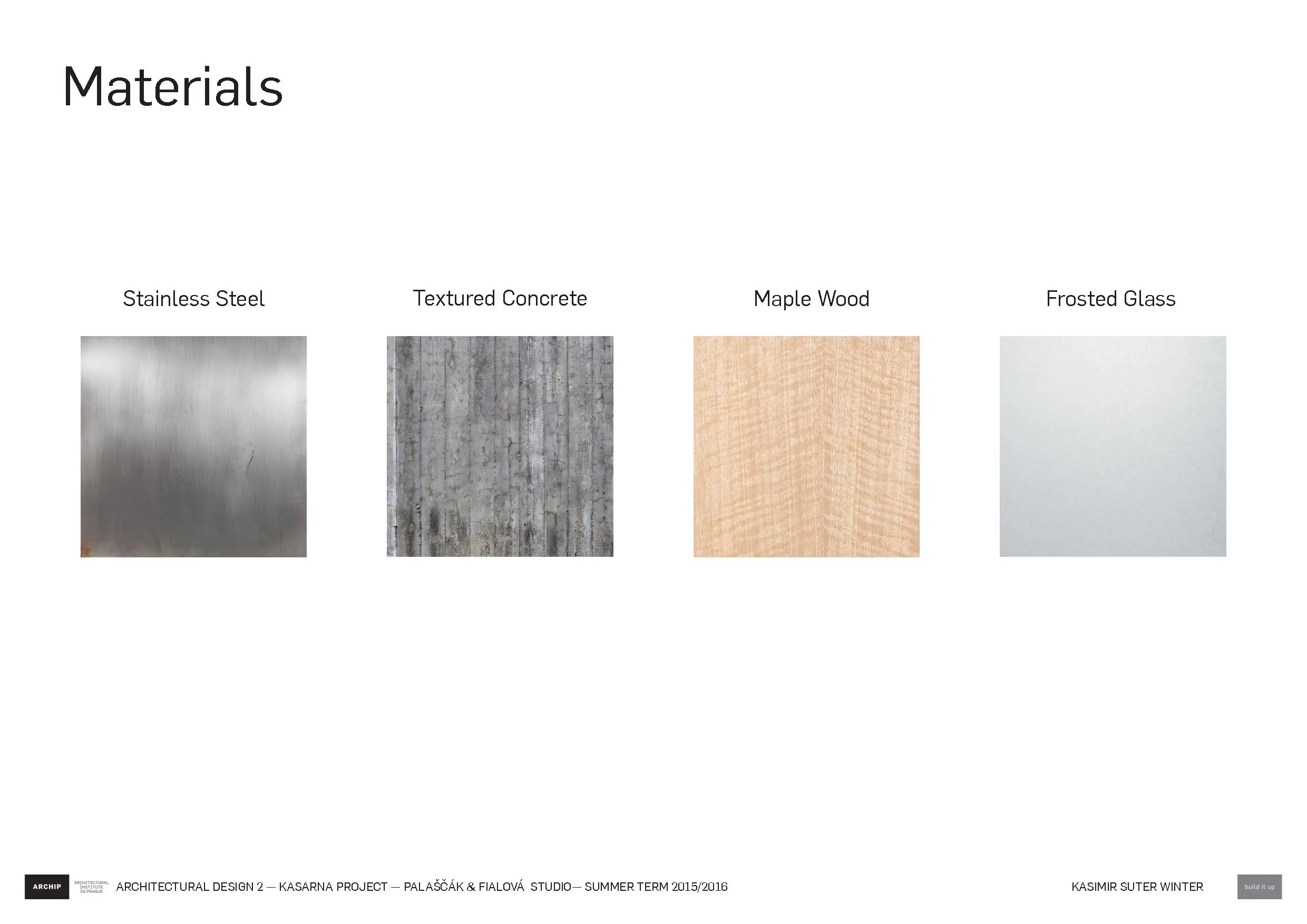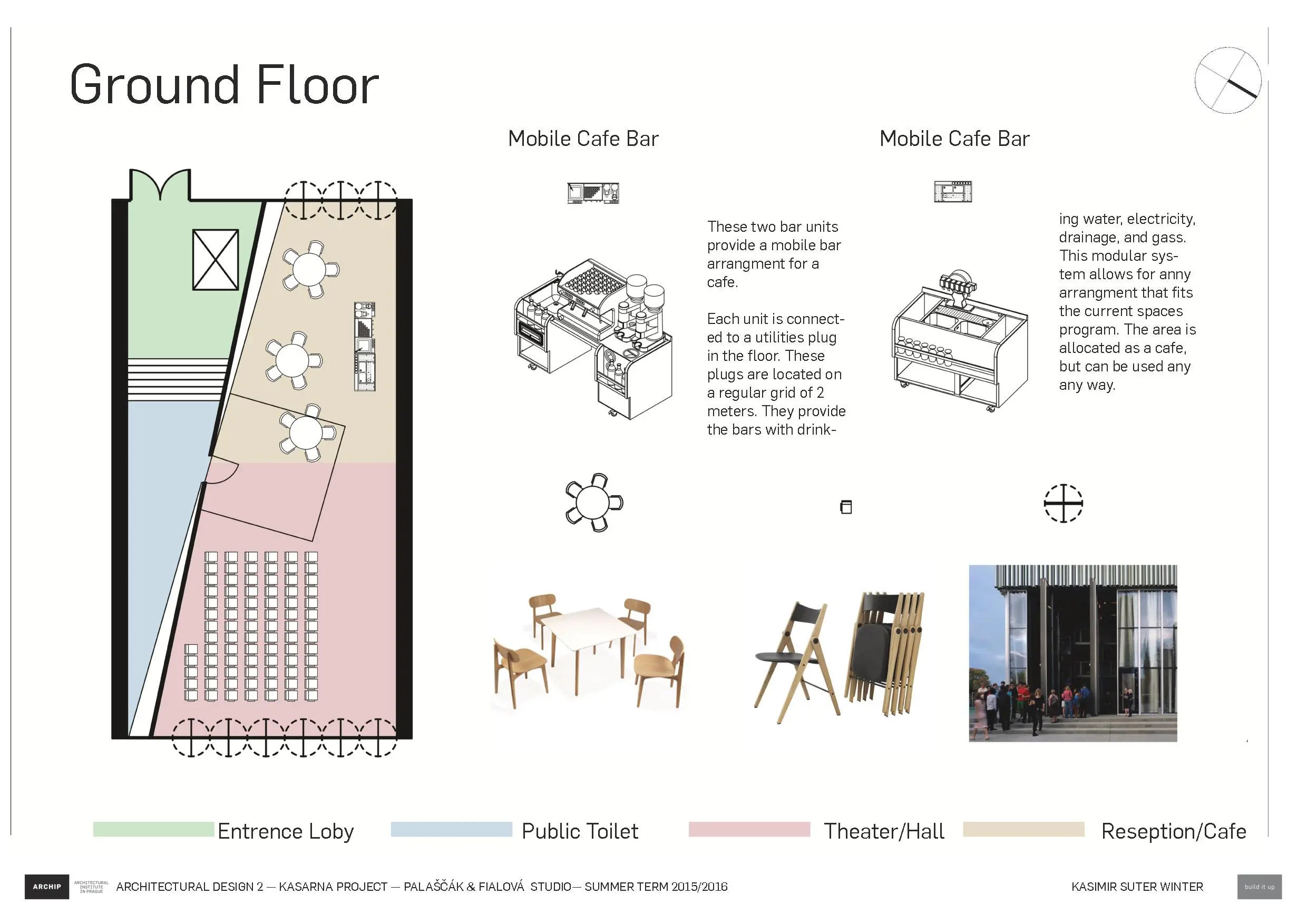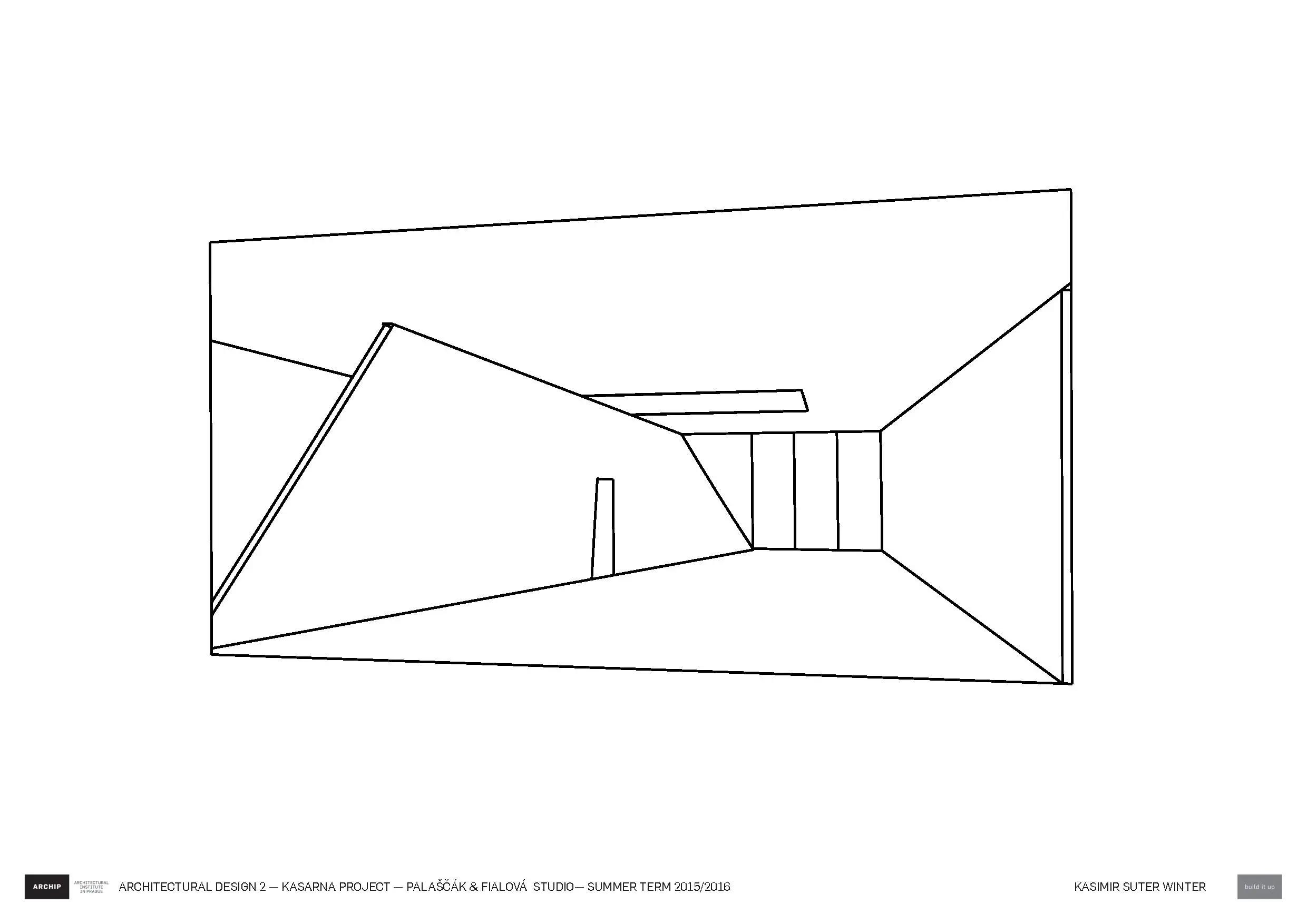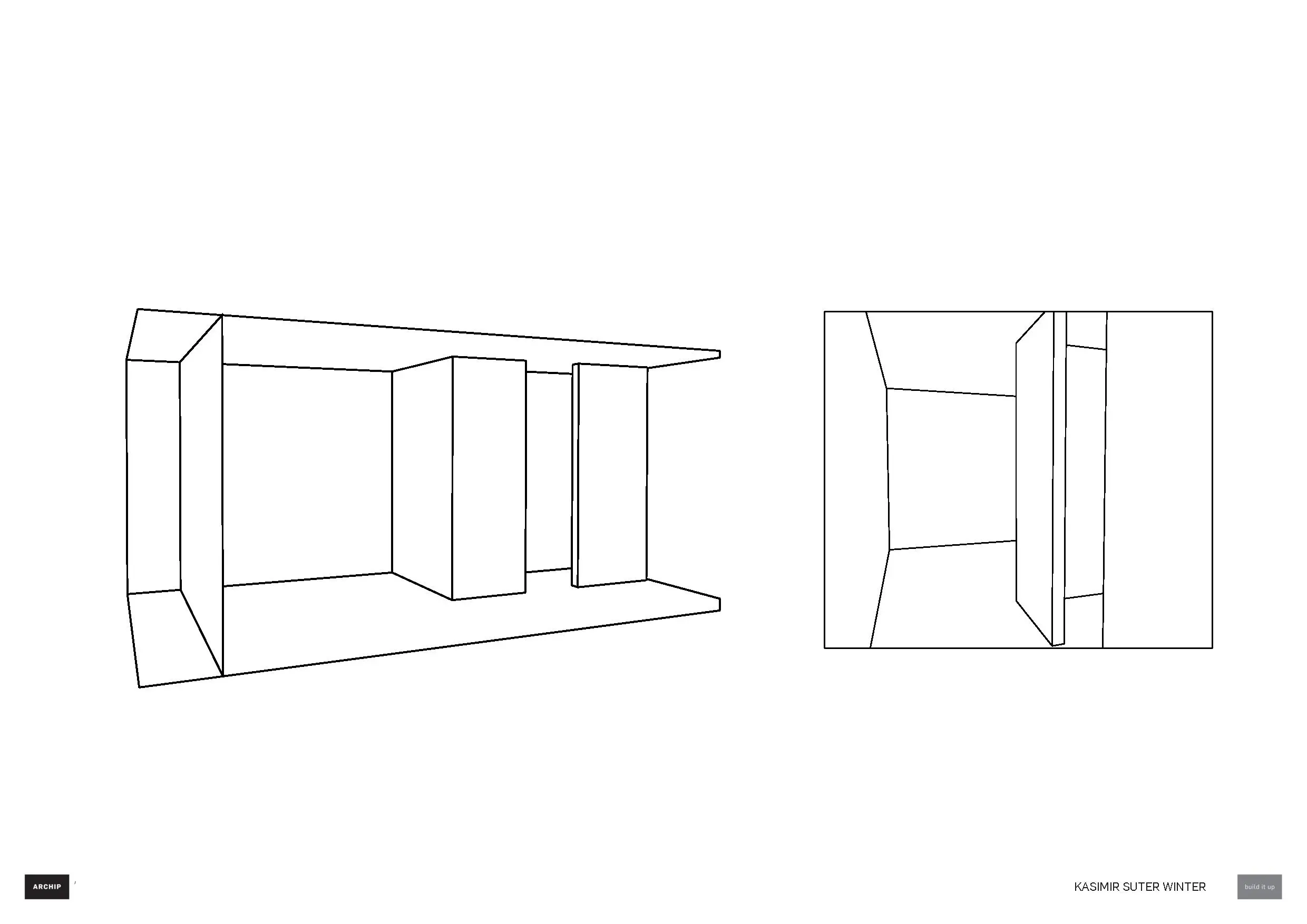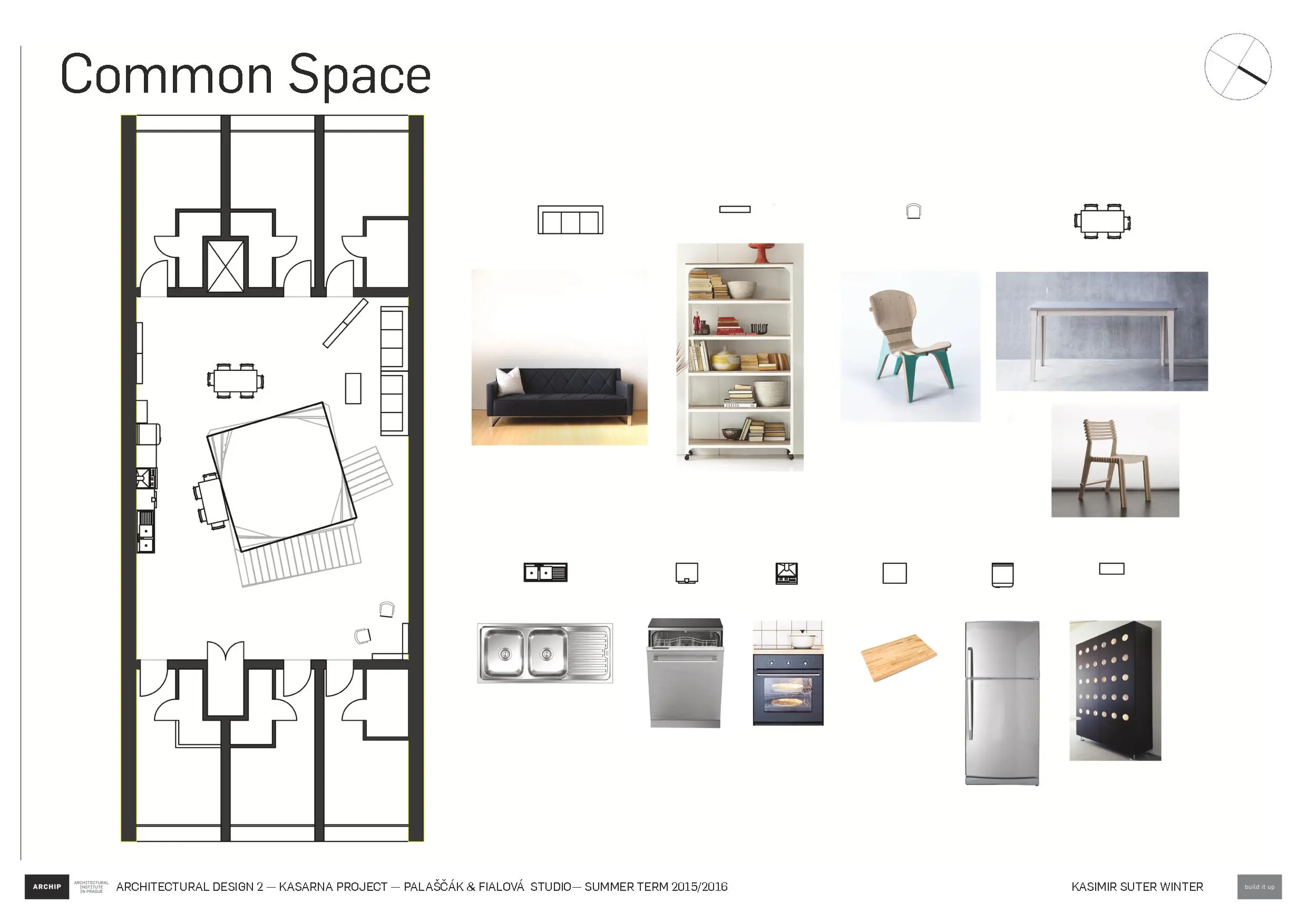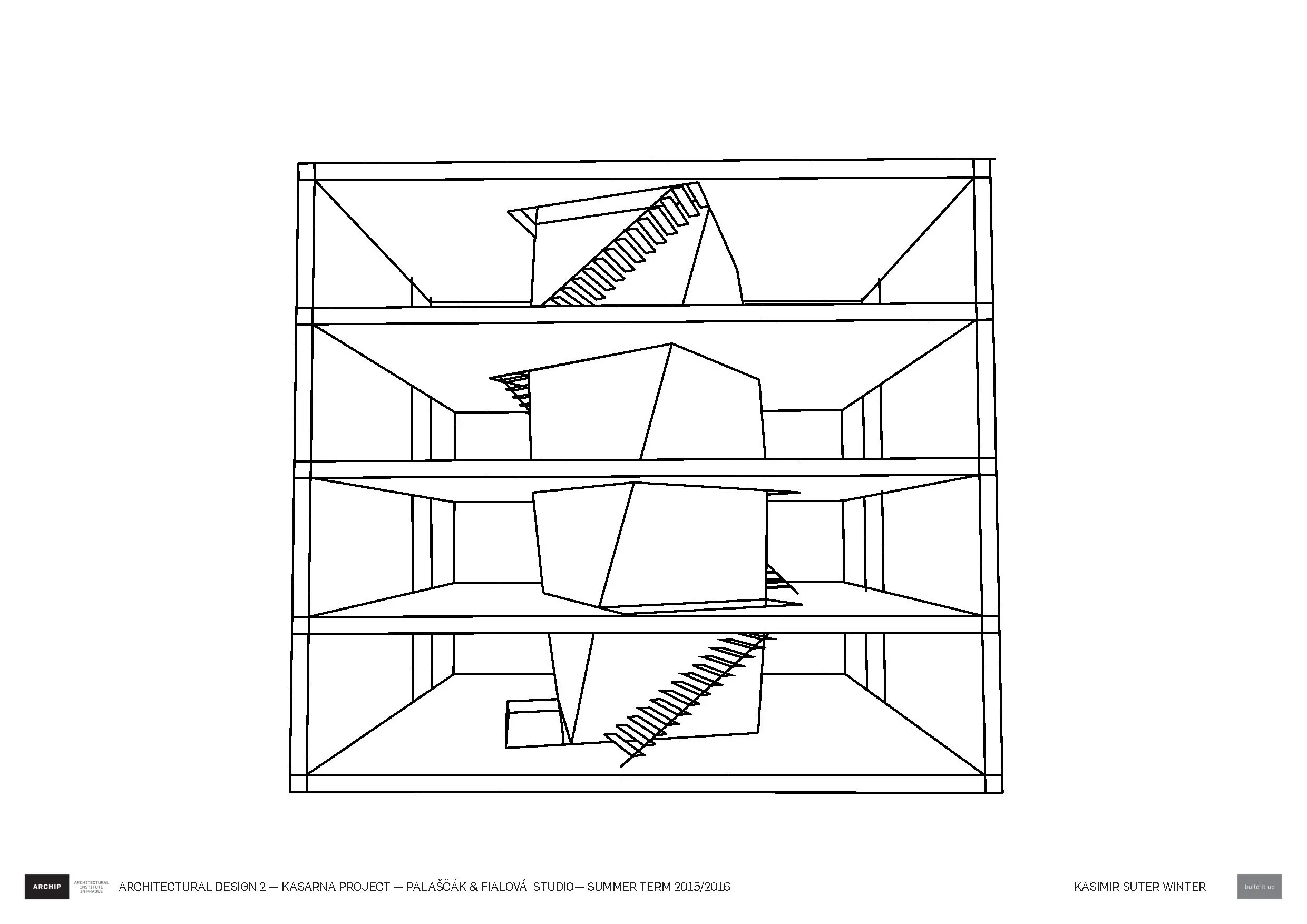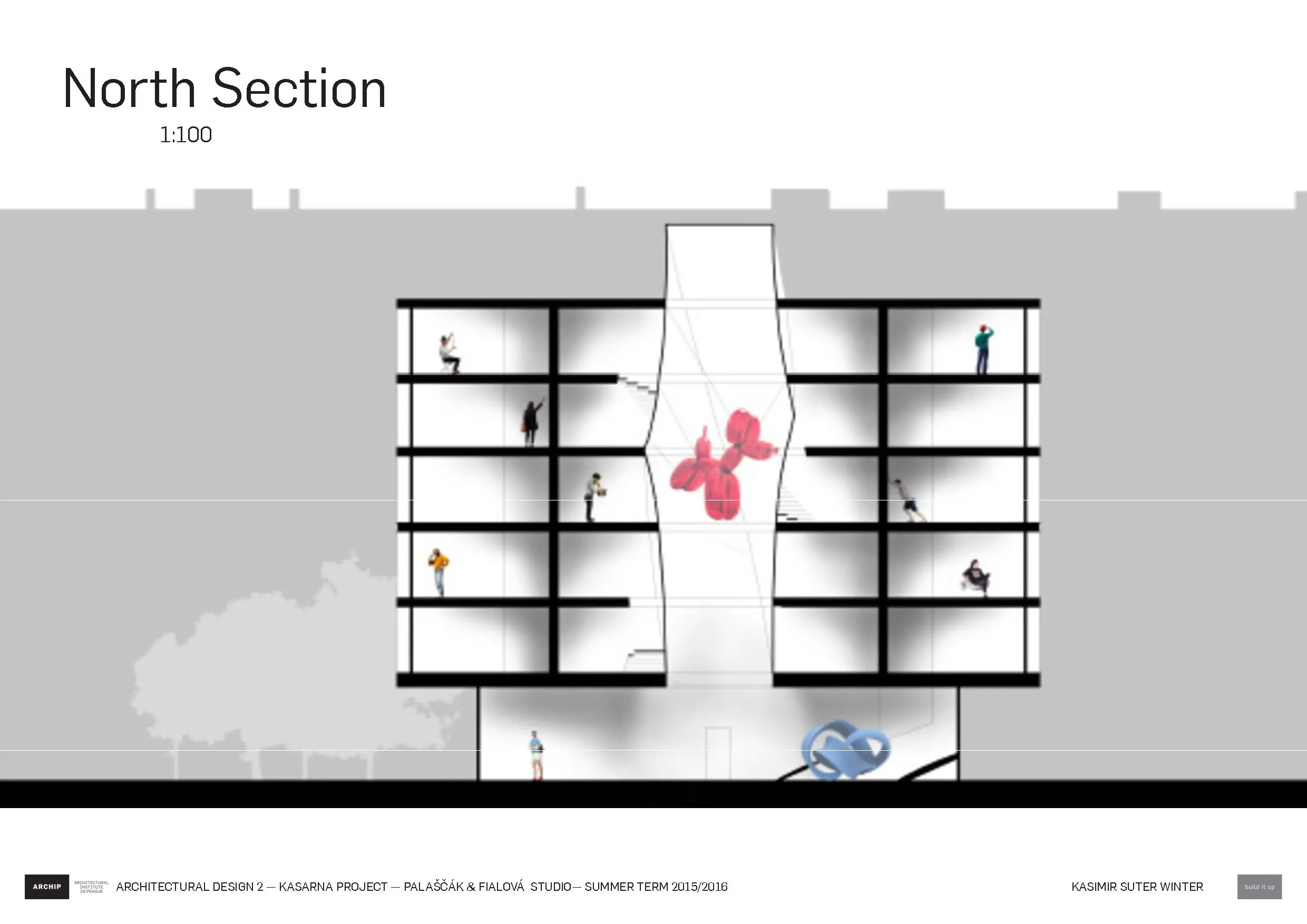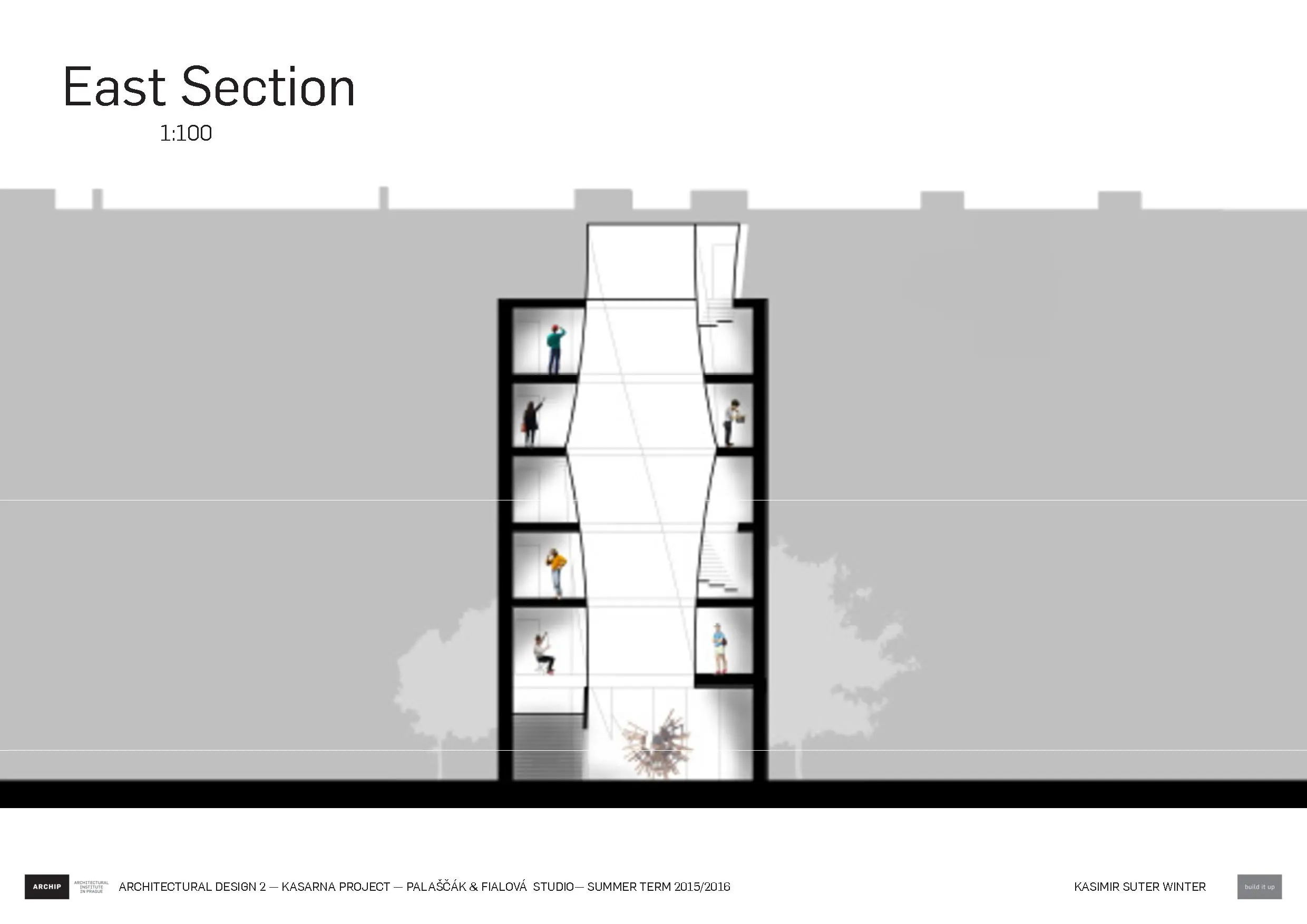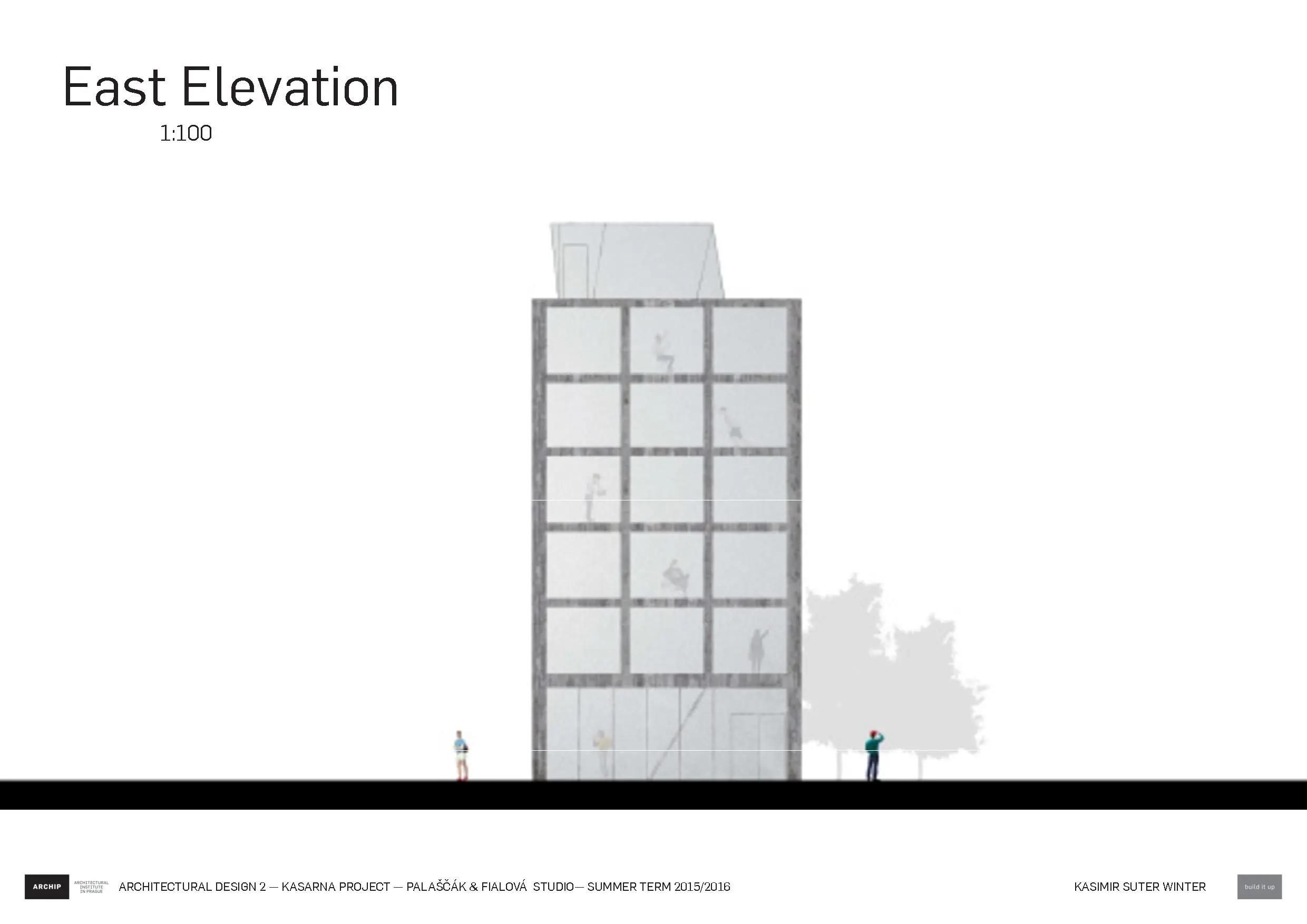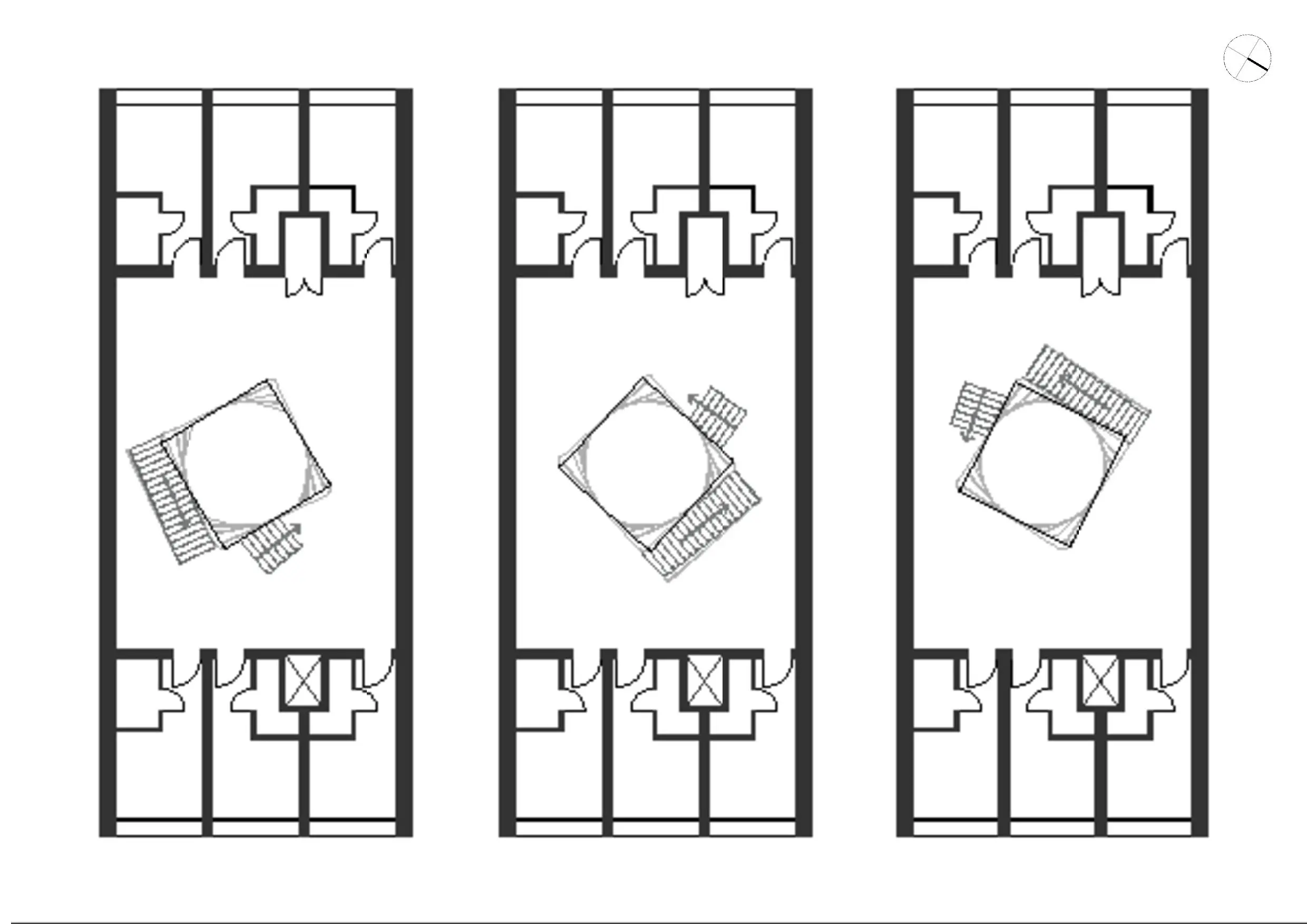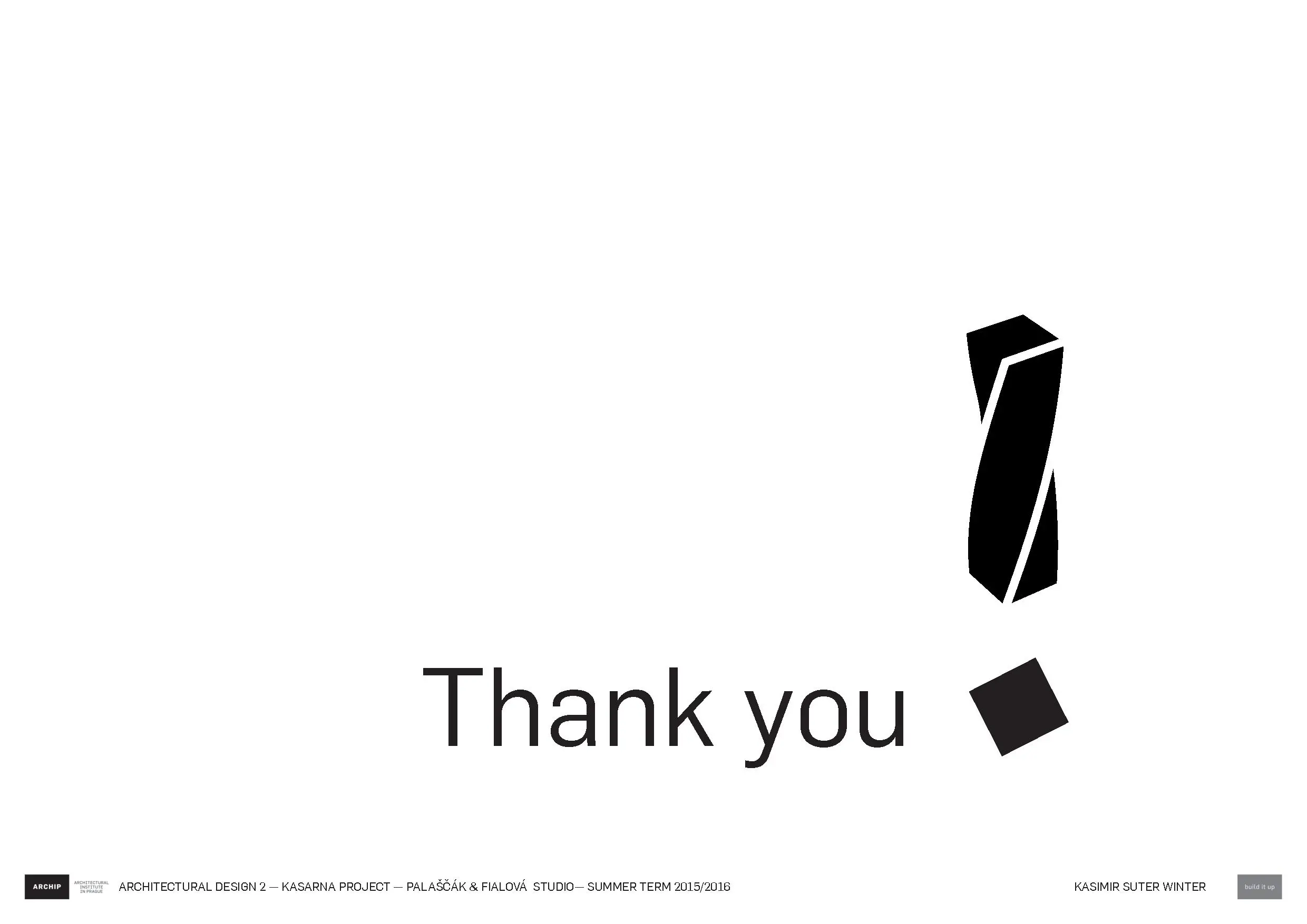Vertical Campground
What if Students Loved Dormitories?
As an exercise, I worked with clay and my imagination to form and shape the interior atrium/core of a building. Assuming a rect angular infill, I modeled the clay to be the void. Bending my mind to understand the relationship between solid and void. We live in the void, yet we shape the solid. How come we do not shape the space we live in? Or is there something to be said for adapting to unusual spaces, which defines the human need to be creative?
I took my conceptual development, and applied my realistic problem: Most dormitories suck. In my analysis and study of this phenomena, I found that the hall way is he key. As the leas cared about space in most dormitories it offers the greatest opportunity for improvement. The failure of dormitories and the success of campsites, is their profoundly different approach to the hallway.
I strongly defined the four categories of inhabited space. Public: Open to all and owned by all, Semi-Public: privately owned but open to public, Semi-Private: Privately owned and open to close neighbors, Private: Privately owned and privately controlled. I also explored the different scales of space, from the large hall, to the tall atrium, to the low cielinged dim common space, and finally the cozy, bright private rooms.

